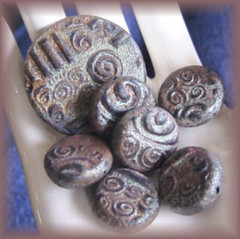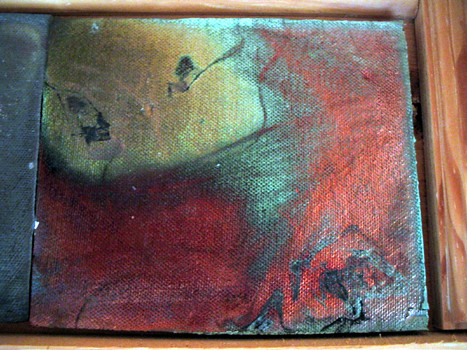
When it comes to the art of pottery, a common question among enthusiasts is, “is raku food safe?” This query arises because of the unique kiln firing technique used in raku pottery, which creates stunning, unpredictable finishes that are beloved by craftsmen and collectors alike. However, because raku involves a rapid temperature change and can sometimes leave pottery more porous, it raises concerns about whether these pieces are suitable for holding food or beverages. Understanding the characteristics of raku pottery and how it’s crafted can help clarify when it’s safe to use these pieces in daily culinary practices.

| Aspect | Raku Pottery | Food Safety Concern |
|---|---|---|
| Firing Technique | Rapid temperature change | Potential for microcracks |
| Porosity | Higher porosity | May absorb food particles and bacteria |
| Glaze | Often contains metals | Possibility of leaching into food |
The Intricate Art of Raku Pottery
Raku pottery stands out due to its unique aesthetics and the captivating unpredictability of its finishes. This art form involves removing pottery from the kiln while it’s still glowing hot and placing it immediately into a combustible material. This abrupt cooling process creates stunning surface patterns, but it also impacts the structure and safety of the pottery.

Understanding Raku Pottery and Food Safety
When considering the food safety of raku pottery, several factors come into play. The most significant concern is the porosity of the final product. Because of the rapid temperature changes during firing, raku pieces tend to be more porous, leading to potential absorption issues.

- Microcracks: The thermal shock from the quick cooling can cause microcracks, making the pottery prone to retaining bacteria and moisture. For more detailed insights on this aspect, you can review the discussion in Morgan Baldinelli’s thesis.
- Porosity: The increased porosity means food particles can easily get trapped inside, which isn’t ideal for cleanliness or food safety. This documentation further elaborates on these microstructural changes.
- Glaze Composition: Many glazes used in raku pottery include metals like lead or copper. If these glazes are not stable, they could leach into food, posing a health risk. The study’s PDF offers an in-depth exploration of glaze compositions and their impacts.
When Is Raku Pottery Safe?
Raku pottery is often best appreciated as decorative art rather than functional kitchenware. However, if you’re determined to use it with food, considering these precautions could make a difference:

- Use a food-safe glaze that’s verified by the manufacturer to prevent harmful leaching.
- Consider using raku pieces for dry foods or display purposes, avoiding direct contact with liquids or anything that requires prolonged containment.
- Regularly inspect the surface of your raku pottery for changes or damages.
Raku’s unpredictable and unique visual appeal undoubtedly makes it an art form worth exploring. While its unconventional firing technique might raise safety questions, taking informed precautions can help you appreciate its beauty without compromising health.
Have you ever experimented with raku pottery in your own craft or collection? Share your experiences or any tips you might have for ensuring food safety when using these distinctively beautiful pieces!
Check out our recent articles to learn more about pottery safety and artistic techniques!
Is Raku Pottery Food Safe? – Resort 2 Travel
When it comes to the art of pottery, a common question among enthusiasts is, “is raku food safe?” To explore this topic further, watch the video “Is Raku Pottery Food Safe?” by Resort2Travel, which delves into the safety and craftsmanship of raku pottery.
Can you eat off of raku pottery?
Raku pottery is fired at lower temperatures and often contains metal oxides that can leach into food or drink. While it’s possible to apply sealants or glazes to reduce water absorption, these coatings don’t eliminate the risk of harmful substances coming into contact with edible items. Raku pieces are best appreciated as decorative art rather than functional dinnerware.
How to make raku pottery food safe?
Some potters attempt to boost the food safety of Raku by using a clear, food-safe glaze and completing a second firing in a gas or electric kiln at higher temperatures. However, this approach can drastically change Raku’s distinctive color variations and surface textures. Converting multiple Raku pieces into fully food-safe ceramics may not be practical if you wish to preserve their unique aesthetic.
Is Japanese raku food safe?
Traditional Japanese Raku is typically fired to around 1,800°F (982°C), which means the glaze doesn’t fully vitrify and remains porous. As a result, it’s unsuitable for direct contact with food. Instead, most collectors and enthusiasts value Japanese Raku for its cultural significance and striking artistic qualities rather than its functionality at the dinner table.
Is horse hair raku food safe?
Horse hair Raku impresses with its intriguing smoke patterns, but it shares the same limitations as other Raku methods, including lower firing temperatures and porous glazes. Because these pieces can absorb liquids and potentially release harmful substances, they’re recommended for decoration only—not for serving or storing food.
In conclusion, while raku pottery offers a unique and visually captivating aesthetic, it’s essential to consider its food safety before using it for everyday dining. The high-temperature firing process and the typically porous nature of raku glazes can pose challenges in creating a truly food-safe surface. However, with the right materials and sealing techniques, it’s possible to enjoy both the beauty and functionality of raku pieces in your kitchen.
Stay Connected for More Ceramic Insights
If you enjoyed learning about raku and want to explore more about pottery and ceramic arts, be sure to follow us on Instagram. We regularly share tips, tutorials, and stunning examples to inspire your creative journey. Let’s keep the conversation going and build a vibrant community of pottery enthusiasts together!
